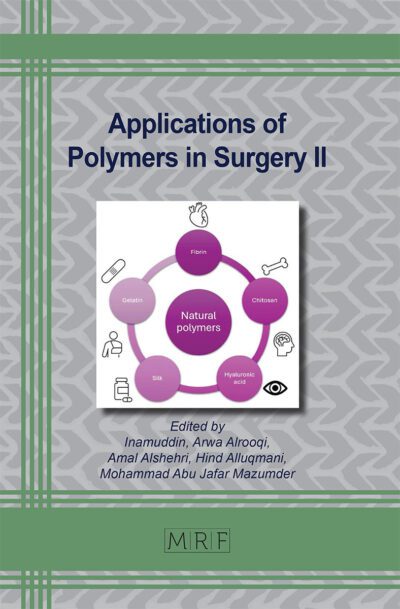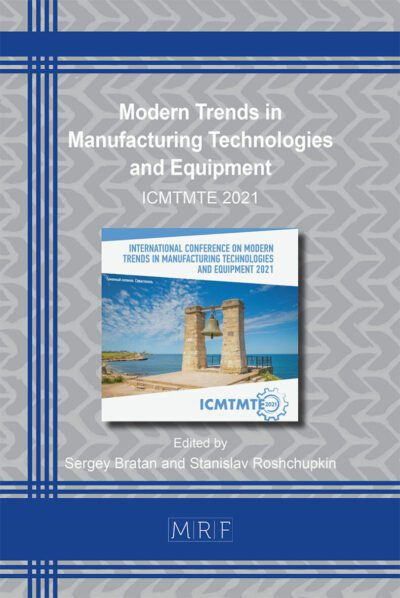Mechanical characterization of plaster-based blends modified with high-density polyurethane wastes
David Rodríguez Izquierdo, Carmine Borgia, Luigino Filice, Francesco Gagliardi
Abstract. This research applies a circular economy model by reusing polymer waste from a local company, promoting recycling and revaluing these materials with applications in the construction sector. The study focuses on a plaster-based composite material, which is incorporated with recycled high-density polyurethane (HDP) particles. Different samples were prepared with specific proportions of HDP in the plaster matrix. With the objective of evaluating the physical-mechanical properties of different compounds, the relationships among specific process variables, which affect their performance in constructive applications, have been analyzed. For this, a factorial experimental design (DOE) with 3 levels and 2 factors was implemented, which allowed analyzing the interactions between the mixing ratio (R) and the amount of HDP, and how these variables affect the density, flexural strength and compression of the compounds. The most relevant results indicate that an increment of R, especially the highest tested level (R=0.7), negatively influences both the resistance to bending and compression caused by porosity, due to the increasing amount of water. An optimal level of R, which ensures good material performance without compromising its mechanical properties, was, in the end, determined. For what concerns the content of HDP, its increasing concentration decreases the performance of the compound in terms of compression resistance, below the minimum standards required value of 2MPa, when HDP at 10% was tested.
Keywords
Mechanical Recycling, Polymer, Plaster, Polyurethane, Memory-Foam, Circular Economy
Published online 5/7/2025, 7 pages
Copyright © 2025 by the author(s)
Published under license by Materials Research Forum LLC., Millersville PA, USA
Citation: David Rodríguez Izquierdo, Carmine Borgia, Luigino Filice, Francesco Gagliardi, Mechanical characterization of plaster-based blends modified with high-density polyurethane wastes, Materials Research Proceedings, Vol. 54, pp 2320-2326, 2025
DOI: https://doi.org/10.21741/9781644903599-250
The article was published as article 250 of the book Material Forming
![]() Content from this work may be used under the terms of the Creative Commons Attribution 3.0 license. Any further distribution of this work must maintain attribution to the author(s) and the title of the work, journal citation and DOI.
Content from this work may be used under the terms of the Creative Commons Attribution 3.0 license. Any further distribution of this work must maintain attribution to the author(s) and the title of the work, journal citation and DOI.
References
[1] O. United Nations, Goal 11. Sustainable Cities and Communities, Sustainable Development Goals (2022). https://www.un.org/sustainabledevelopment/es/cities/
[2] G. T. Howard,“Biodegradation of Polyurethane: A Review,” International Biodeterioration & Biodegradation,Vol. 49, No. 4, 2002, pp. 245-252. https://doi.org/10.1016/S0964-8305(02)00051-3
[3] M. Harun-Ur-Rashid, A. Bin Imran, “Emerging Trends in Engineering Polymers: A Paradigm Shift in Material Engineering,” Recent Progress in Materials, Vol. 6, No. 3, 2024, Art. 024, DOI: 10.21926/rpm.2403024
[4] Ping He, Haoda Ruan, Congyang Wang, and Hao Lu: Mechanical Properties and Thermal Conductivity of Thermal Insulation Board Containing Recycled Thermosetting Polyurethane and Thermoplastic. Polymers 2021, 13(24), 4411; https://doi.org/10.3390/polym13244411
[5] Mnjit Singh , M. Garg, “Perlite-based building materials — a review of current applications,” Construction and Building Materials, Vol. 5, No. 2, 1991, pp. 75-81
[6] K. Ragaert, L. Delva, K. Van Geem, “Mechanical and chemical recycling of solid plastic waste,” Waste Manag., 2017, Vol. 69, pp. 24-58, https://doi.org/10.1016/j.wasman.2017.07.044
[7] A. Kemona, M. Piotrowska, “Polyurethane Recycling and Disposal: Methods and Prospects,” Polymers, 2020, Vol. 12, No. 8, Article 1752, https://doi.org/10.3390/polym12081752
[8] M. Álvarez, P. Santos, D. Ferrández, Investigation of gypsum composites with different lightweight fillers: A physico-mechanical characterisation regarding possibilities for building applications, J. Build. Eng. 79 (2023) 107813. https://doi.org/10.1016/j.jobe.2023.107813
[9] H. Majdoubi, R. Makhlouf, Y. Haddaji, M. Nadi, S. Mansouri, N. Semllal, M. Oumam, B. Manoun, J. Alami, H. Hannache, Y. Tamraoui, “Valorization of phosphogypsum waste through acid geopolymer technology: synthesis, characterization, and environmental assessment,” Constr. Build. Mater., Vol. 371, 2023, Article 130710
[10] S. Oubaha, Y. Taha, M. Loutou, M. Oualid Mghazli, M. Benzaazoua, R. Hakkou, “Fired brick production using phosphogypsum and phosphate mining waste,” Constr. Build. Mater., Vol. 403, 2023, Article 133149, https://doi.org/10.1016/j.conbuildmat.2023.133149
[11] M. Del Río-Merino, A. Vidales-Barriguete, C. Piña-Ramírez, V. Vitiello, J. Santa Cruz-Astorqui, R. Castelluccio, “A review of the research about gypsum mortars with waste aggregates,” J. Build. Eng., Vol. 45, 2022, Article 103338, https://doi.org/10.1016/j.jobe.2021.103338
[12] J. Harder, “Outlook on the gypsum industry,” ZKG International, 2020. Available online: https://www.zkg.de/en/artikel/zkg_Outlook_on_the_gypsum_industry-3562195.html
[13] S. Gutiérrez-González, J. Gadea, A. Rodríguez, C. Junco, V. Calderón, “Lightweight plaster materials with enhanced thermal properties made with polyurethane foam wastes,” Constr. Build. Mater., 2012, Vol. 27, Issue 1, pp. 195-201, https://doi.org/10.1016/j.conbuildmat.2011.10.055
[14] EN 13279-1:2009. Gypsum binders and gypsum plasters. Definitions and requirements; 2009
[15] EN 13279-2. Gypsum binders and gypsum plasters. Test methods; 2004
[16] S. Gutiérrez-González, J. Gadea, A. Rodríguez, M.T. Blanco-Varela, V. Calderón, “Compatibility between gypsum and polyamide powder waste to produce lightweight plaster with enhanced thermal properties,” Constr. Build. Mater., 2012, Vol. 31, pp. 222-228, https://doi.org/10.1016/j.conbuildmat.2012.02.061
[17] M. Touil, A. Lachheb, R. Saadani, M. Sanbi, A. Talidi, M. Rahmoune, “Experimental investigation on the combined effect of the water mixing ratio and the addition of spent coffee grounds on plaster’s thermo-mechanical properties,” Transformation in Science and Engineering Processes, 2022, Article 101488, https://doi.org/10.1016/j.tsep.2022.101488
[18] A. Asadi Ardebili, P. Villoria Sáez, M. González Cortina, D. M. Tasán Cruz, Á. Rodríguez Sáiz, E. Atanes-Sánchez, “Mechanical characterization of gypsum mortars with waste from the automotive sector,” Constr. Build. Mater., 2023, Article 130675, https://doi.org/10.1016/j.conbuildmat.2023.130675
[19] S. Herrero, P. Mayor, F. Hernández-Olivares, “Influence of proportion and particle size gradation of rubber from end-of-life tires on mechanical, thermal and acoustic properties of plaster–rubber mortars,” Mater. Des., 2013, Vol. 46, pp. 129-139, https://doi.org/10.1016/j.matdes.2012.12.063














